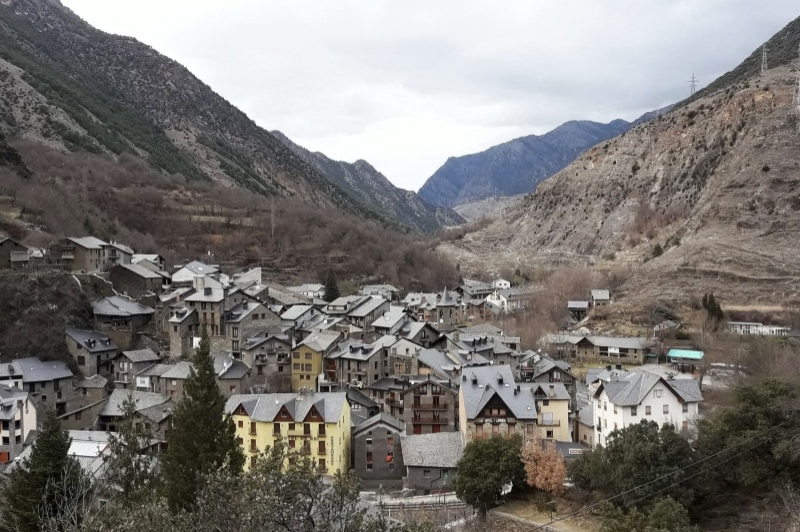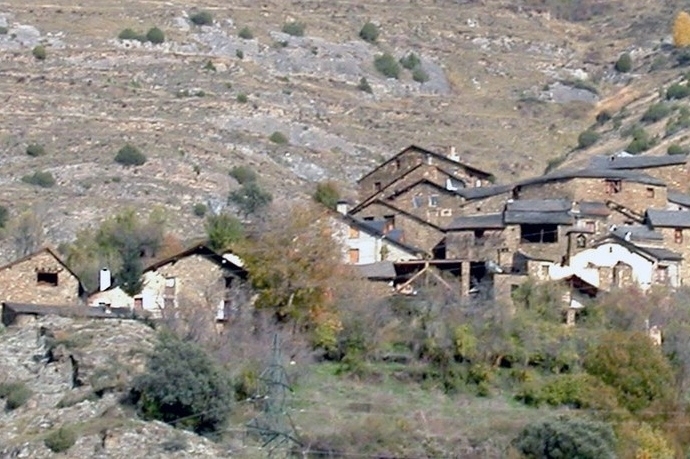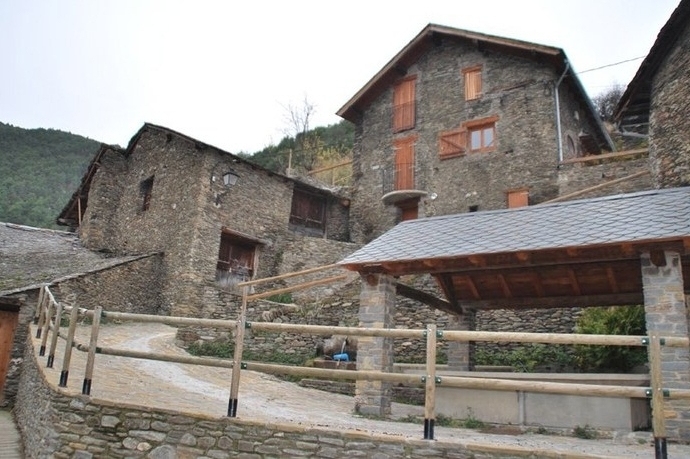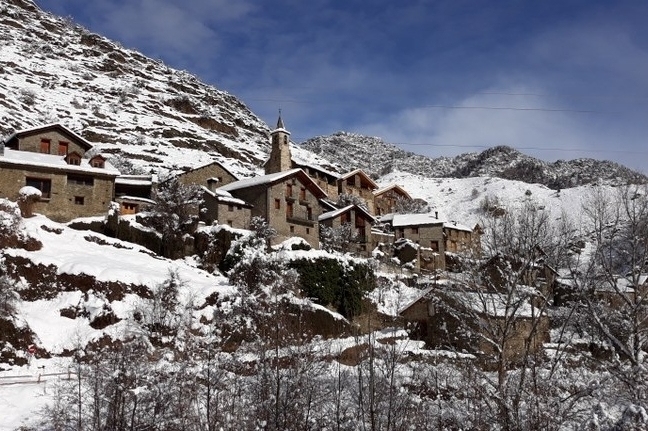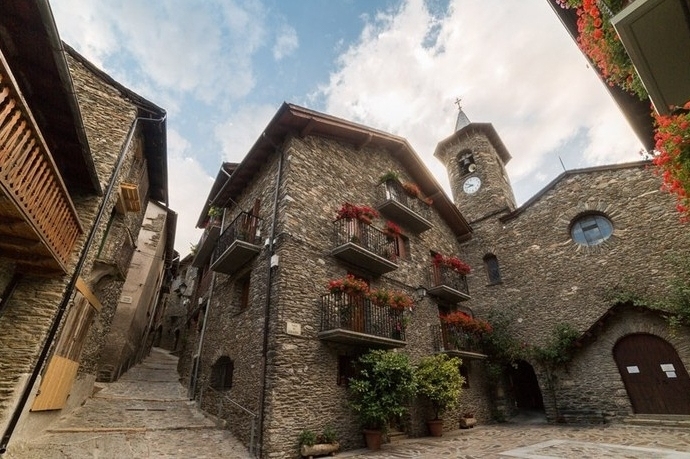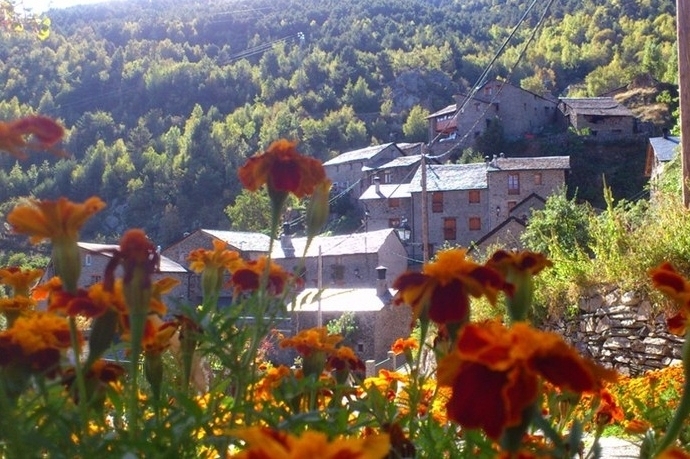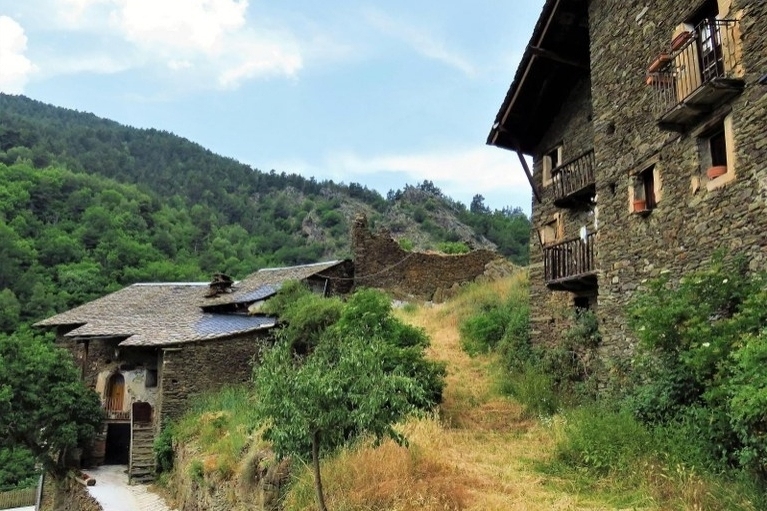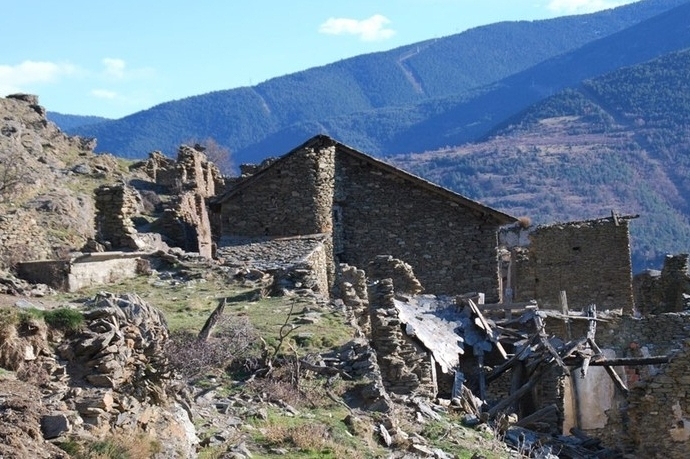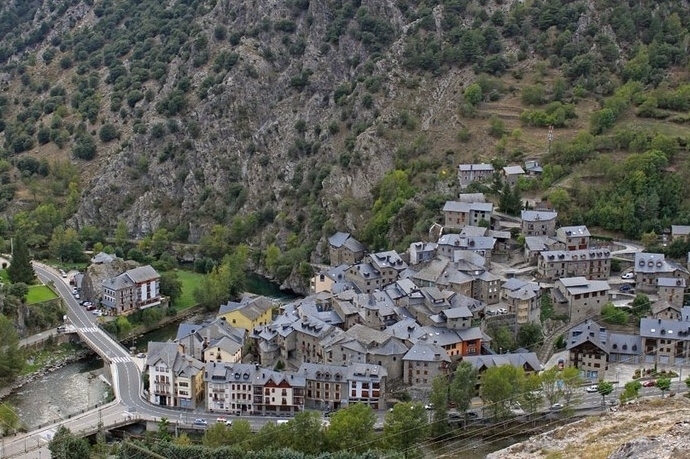Llavorsí
Llavorsí is located in the north of Catalonia, exactly, in the Pallars Sobirà region and is surrounded by three valleys: the Valle d'Àneu, the Cardós Valley and the Ferrera Valley.
It will surely sound familiar to many of you because of the sports practices that take place in this area, especially rafting since the Noguera River allows large descents. Its location in the Central Pyrenees constitutes a mountainous environment. in fact, one of the best known forests in the region is that of Arnui, which is located in the municipality of Llavorsí. This one is made of red pine and birch trees and inhabited by the fauna of the area (isard, roe deer,...).
Currently, there are approximately 300 inhabitants. Within its term and therefore, below its district there are six more nuclei; Aidí, Arestui, Baiasca, Montenartró, Romadriu and Sant Romà de Tavèrnoles. Although it is such a small population, they have a Tourist Office in the same town since we are talking about a population in which its economy is mainly focused on this sector.
As regards cultural heritage, we can find the Mare de Déu de Biuse hermitage. It is a baroque sanctuary that presided over the old medieval town that also received this name. Every year the population of Llavorsí holds a meeting there. Very close to it are the ruins of Gilareny Castle. Today, a tower of it still stands. Around it you can still recognize the old medieval roads.
Baiasca is the nucleus where the most Romanesque heritage has been maintained and which is so particular to the Catalan Pyrenees. We can visit the church of Sant Serni, where inside it some frescoes from this time are preserved. Also, we can find some remains of the chapel of Sant Bartomeu of which an apse, the wall and remains of its structure remain.
Aidí
It is located in the northwest of Llavorsí, on a slope to the left of the Noguera Pallaresa, more than 5 kilometers from the head of the municipality.
At the northern end of the term, elevated to 993 m of altitude, on the left bank of the Noguera Pallaresa and on a slope under the peak des Malls, is the town of Aidí, centered by the parish church of San Justo (currently called del Rosario or del Roser ), a small building with a square tower bell tower. At the level of the river and the road, under the town, was the Aidí hostel.
It is located to the right of the Barranco de Feners and to the left of the Restollo. A few meters up is the col de la bana and le pic de l'Orri.
Arestui
In the Baiasca valley, in the northwestern sector of the municipality, the town of Arestui (1 247 m; 16 h in 2001) is located, about 3 km from the Noguera Pallaresa and to the right of the Baiasca river, surrounded by large forests.
Located 4.6 km from the main road. It is grouped around the church of San Martín, where the houses join the church, closed in a small square, the façade cannot be seen in its entirety. We find a hostel very frequented by cyclists who make the Trans-Pyrenean crossing.
The houses form a single body with the small church of San Martín, suffragan to that of Baiasca.
To the southeast of Arestui, elevated to 1,550 m, on an elevation that dominates the valley, is the Romanesque hermitage of Santiago, with a nave and rectangular apse. The main festival is celebrated on the last Sunday in August. There is a pilgrimage to the hermitage of Santiago on May 1.
Llavorsí
Where the river Noguera Pallaresa has its main crossing, when it receives the waters of the Noguera de Cardós and the paths of the three valleys (Vall Ferrera, Coma de Burg and Cardós) meet the main path, that is where Llavorsí is.
The river, the fluvial network as a whole, has been and still is, the basis of the local economy of Llavorsí: first the right of the pontazgo, then the water was the driving force of millstones, fulling mills and ironworks, and the transport route of wood by loggers; and now, rivers generate electricity or are the basis of active tourism activities.
Llavorsí, due to its geographical location, at the double crossroads of rivers and roads, becomes the point of confluence of all the valleys of Alto Pallars, at the same time as a gateway between the lower lands of the southern half of Pallars Sobirà and the lands steep slopes of the high valleys of Pallares.
The houses of the village are grouped one on top of the other and give the impression that they are imprisoned among the mountains that surround them. The town preserves its Pyrenean air in the restorations of the old houses and the new constructions that have always followed the criteria of the rest of the group.
The perfectly preserved old town stands out. The streets are narrow, cobbled and with steep slopes, creating an ideal environment for walks. The church is dedicated to Santa Ana, decorated with modern wall paintings.
Llavorsí is one of the founding members of the Network of Charming Towns of the Lleida demarcation.
Baiasca
About 4 km from Arestui. Seen from the road it is a charming town. The bell tower of the Romanesque church of San Saturnino stands out, it is preserved inside original paintings of the time. Further inland in this valley, near the headwaters and to the left of the Baiasca river, is the town of Baiasca at an altitude of 1,313 meters.
It forms a small group of houses centered on the parish church of San Saturnino, Romanesque in origin but highly modified, which has interesting Romanesque frescoes inside.
Further north, on a hill, are the remains of the old church of San Bartolomé, also Romanesque. The main festival is celebrated on August 23. It is celebrated on November 29, by San Saturnino.
Montenartró
Montenartró is a town located 1,300 meters high at the entrance to the Santa Magdalena Valley, one of the most inhospitable in the Alto Pirineu Natural Park. Its forests known for the production of wood and also mushrooms, are a wonderful environment for walks and excursions. Broken by ravines that fill with freshness and natural wealth, crossed by old paths, traveled by generations of cattlemen, smugglers, forest pickers, charcoal burners,...
It is made up of a small group of houses and the parish church of San Esteban, made of stone, with a belfry, modernly redone. Montenartró, was head of the decan of Montenartró, which comprised the entire upper Pallars (some 40 parishes), except for the Vallferrera and Vall de Cardós sectors.
The main festival is celebrated on the second Sunday in October.
Romadriu
Elevated place above the river and a dam. The town has gradually gone restaurant. A plaque from the Democratic Memorial recalls that many soldiers of the Spanish Civil War were buried in its cemetery. Further east, to the right of Romadriu, at an altitude of 1,346 m, rises the town of Romadriu de Ribalera, located in the municipality of Farrera, on the border with Montferrer i Castellbò.
There are few whole houses left and the church of San Martín, suffragan to that of Montenartró, which is built on the ruins of the older, larger one, of which some walls still remain.
San Romà de Tavèrnoles
Old town in ruins, it can only be accessed on foot by crossing the Gulleri bridge, about 6 km from Llavorsí and going straight up, passing between the remains of the Monastery of Vellanega, an old Benedictine abbey (San Pedro de Vellanega) already mentioned in 969, when it was ruled by Abbé Salla; In 976, no longer abbot, it was ceded to the monastery of San Saturnino de Tavèrnoles and since then its abbots were also titled Abbots of Vellanega; he became a simple priory from 1093 and still had a certain monastic life in 1268; from the fourteenth century it was only a possession ruled by a clergyman.
At noon from Llavorsí, up a slope that descends from Baladredo, on the left bank of the Noguera Pallaresa, is the sanctuary of the Virgin of Biuse, a simple building without a bell tower or an apse decorated with paintings inside. On the second Sunday of May there is a very crowded gathering in which, after mass, a quarter kilo bread is distributed to the attendees (Biuse's charity). The place corresponds to the old castle of Biuse of the county of Pallars. In 1985 a large number of bronze age pieces were found near this hermitage.
What to do
Rafting Llavorsí
LlavorsíRafting, canyoning, horse riding, hydrospeed, river canoes, bus-bob, hiking, snowshoe excursions, skiing…
Espai museístic del Ferro Casa Sintet
Alins (Vall Ferrera) (a 10.4 Km)The museum offers a guided tour, made by the same family of…
Where to eat
Roch Hotel - Restaurant
Sort (a 10.3 Km)Small rural hotel with a family character, very cozy where its owners…
Where to sleep
L'Hort del Metge
Vall de Cardós (a 12.2 Km)The Hort del Metge is located in the town of Lladrós, which…
Events
Experiences
100 years of planetariums in the world, 30 years of planetarium…
Museu Marítim de Barcelona (Barcelona)

